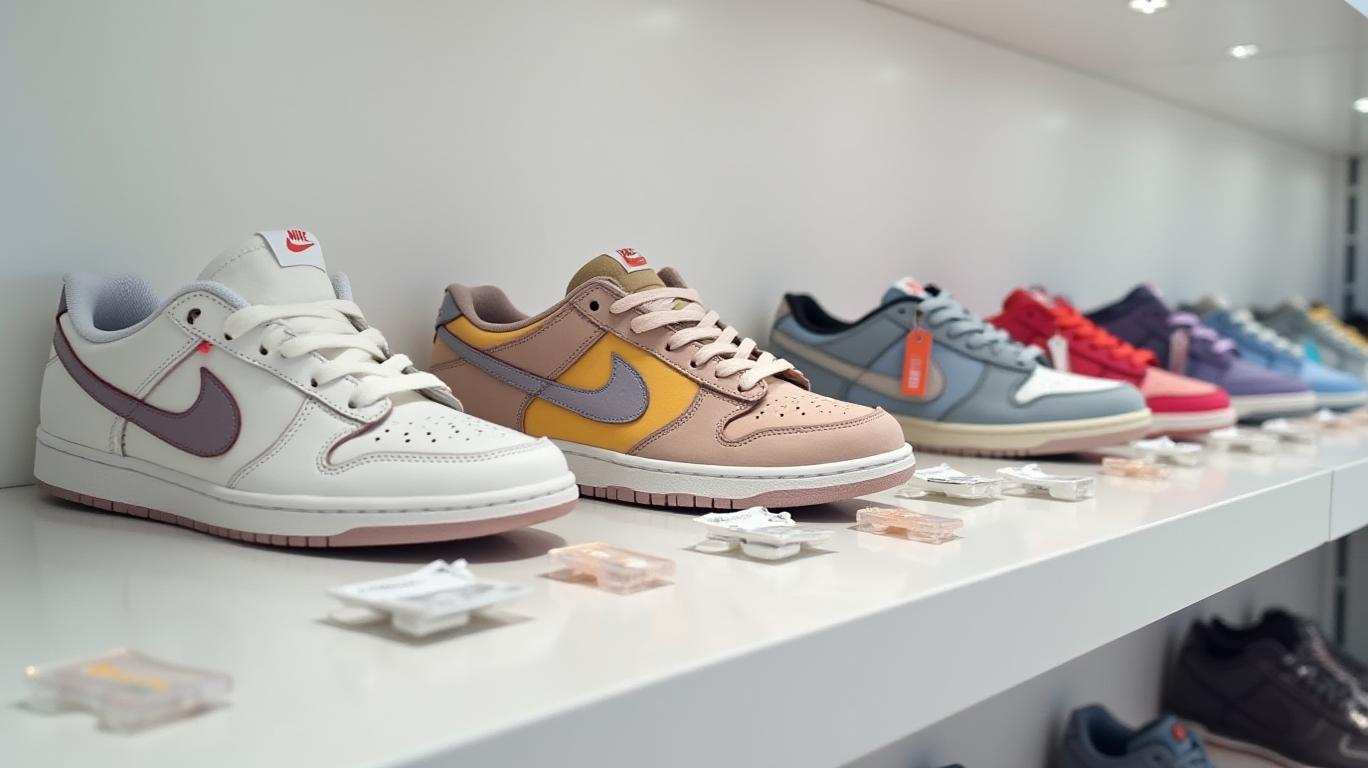Nike's Pricing Power Under Pressure: Navigating Tariffs to Secure Retail Dominance
The global retail landscape is bracing for the most significant tariff-driven pricing shakeup in decades.
, the sportswear giant, faces a pivotal test as it balances rising import costs with the delicate task of preserving affordability for its core consumer base. With tariffs on Chinese-made footwear and apparel temporarily reduced to 10%—a stopgap that may expire as soon as August—Nike’s pricing strategy has become a barometer for how brands can sustain profitability without alienating customers. Here’s why investors should pay close attention.The Tariff Tightrope: Costs vs. Consumer Demand
The U.S. tariffs on Chinese imports, now at 10% after a May 2025 reduction from 145%, have forced Nike to rethink its pricing calculus. While the temporary reprieve eased immediate cost pressures, the company’s Q2 2025 results underscore the fragility of its margins: gross margin fell to 43.6%, a 100-basis-point drop year-over-year, as discounts and channel shifts offset some tariff relief. To combat this, Nike announced plans to raise prices by June 2025, with footwear priced between $100–$150 increasing by $5 and higher-end items rising by $10. Apparel and equipment will also see hikes of $2–$10.
The move is a calculated risk. While price increases can mitigate tariff-driven costs, they also risk further depressing demand in a market already疲软. Nike’s revenue dropped 8% to $12.4 billion in Q2, with North American shipments delayed and foreign exchange headwinds adding to the strain. Yet, the company’s “Win Now” strategy—focusing on core categories like running and training apparel—aims to offset these challenges by prioritizing high-margin products and premium storytelling.

Margin Management: A Delicate Dance
Nike’s margin struggles are emblematic of broader retail-sector pressures. The Yale Budget Lab estimates that tariffs alone could reduce U.S. GDP by 0.7% in 2025, with households facing average annual losses of $2,800. For Nike, the stakes are existential: its $8 billion inventory (flat year-over-year) reflects a cautious approach to overproducing in an uncertain market.
The company’s response hinges on two pillars:
1. Price Discrimination by Demographic: Raising prices selectively for higher-end products while maintaining affordability for mass-market items. This targets affluent consumers (e.g., those buying $200+ sneakers) while keeping essentials accessible.
2. Channel Optimization: Shifting focus to wholesale partners, where revenue grew 5% (currency-neutral), to offset declines in direct sales (down 8%).
Risks to Revenue Stability and Brand Loyalty
The strategy isn’t without pitfalls. Competitors like On and Hoka are gaining traction with younger, price-sensitive consumers, while Nike’s brand relevance is being tested in a market demanding social responsibility and inclusivity. Executives acknowledge the April 2 deadline for a potential “universal tariff” as a wildcard, with CFO Matthew Friend stating, “Tariffs remain a critical uncertainty.”
A 95% profit margin erosion is possible if tariffs revert to 145%, according to analysts. Meanwhile, lower-income households—disproportionately hit by tariff-driven inflation—are already feeling the squeeze, with the 2nd income decile losing $1,300 annually. If demand for Nike’s products softens further, the company’s $1.2 billion net income (down 26% YTD) could face deeper declines.
Implications for Retail and Investor Confidence
Nike’s actions set a precedent for how global retailers will navigate tariffs. The company’s reliance on Vietnam and Indonesia for 80% of production adds geopolitical risk, but its agility in adjusting prices and supply chains could position it as a leader in cost management. Meanwhile, the average 22% upside potential implied by Wall Street’s $77.21 price target hints at investor optimism in Nike’s long-term resilience.
Yet, the path to recovery is narrow. Success depends on executing the “Win Now” strategy flawlessly: revitalizing core brands, leveraging digital engagement, and avoiding overpricing that drives customers to cheaper alternatives.
Final Analysis: Invest Now, But Monitor Tariff Developments
Nike’s stock—currently trading at $63—offers a compelling entry point for investors willing to bet on its ability to navigate tariffs and retain brand loyalty. The company’s $1.6 billion in shareholder returns (dividends and buybacks) signal financial strength, while its focus on unit growth over inventory bodes well for liquidity.
However, the April 2 tariff decision and geopolitical developments could upend progress. Investors should monitor Nike’s Q3 results closely for signs of margin stabilization and demand resilience.
In a world where every cent counts, Nike’s pricing adjustments are a masterclass in strategic survival. For now, the brand’s equity and agility justify a cautious buy—but stay vigilant. The next 90 days could redefine its future.

Comments
No comments yet